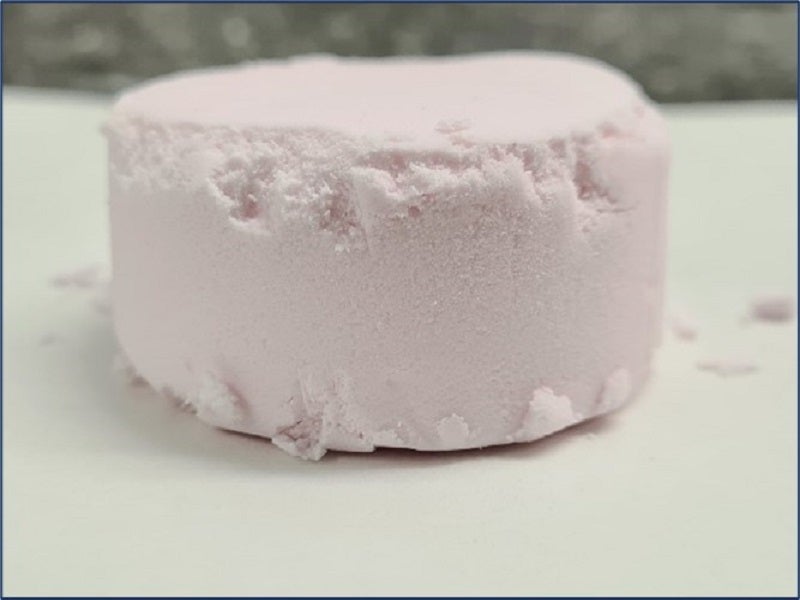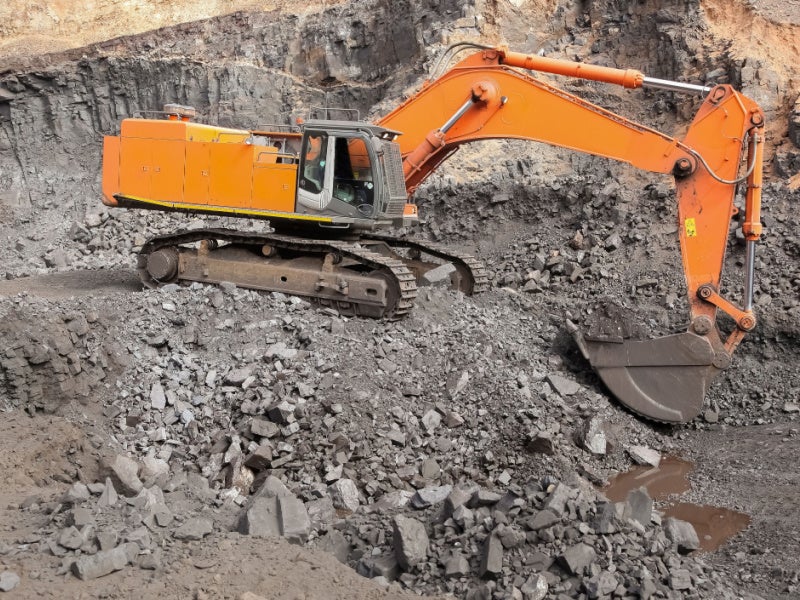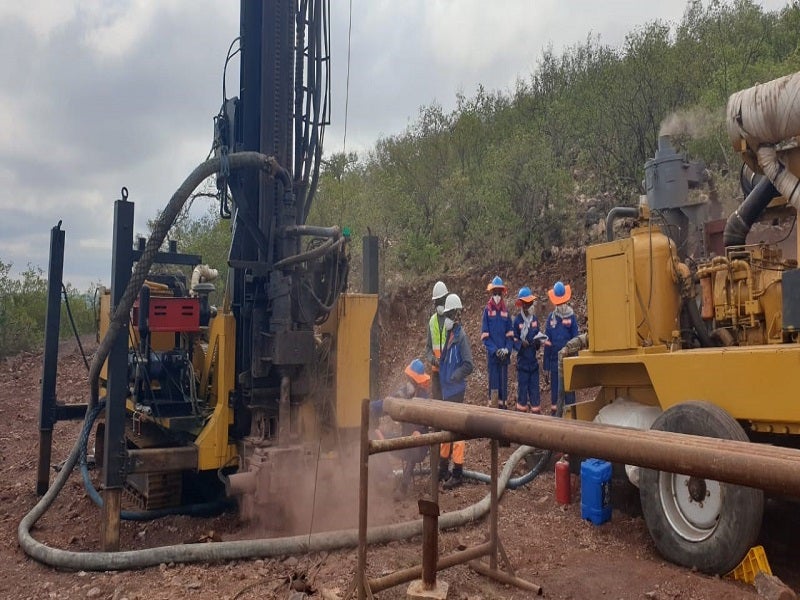The K.Hill battery manganese project is being developed in Botswana by Canadian mineral resource development company Giyani Metals (Giyani) to produce high-purity manganese sulphate monohydrate (HPMSM). It is expected to be one of the world’s biggest HPMSM projects.
The project lies within a 438km² licence area that is part of the Giyani project area, containing several tenements and encompassing 1,960km². The licence area for the K.Hill project is owned by Menzi Battery Metals, a wholly owned subsidiary of Giyani.
The project is expected to require an initial capital expenditure of $281m.
A feasibility study completed in November 2022 indicated that the K.Hill project has an estimated mine life of 11 years. The potential additional resources at a nearby prospect, named Otse, provide an upside with the potential to expand the mine life of the project in the future.
K.Hill project location and geology
The K.Hill battery-grade manganese project is being developed in the Kanye Basin in south-eastern Botswana.
The geology of the project consists of supergene-enriched manganese (Mn)-shale interbedded inside ferrum (Fe)-shale, covered by a chert dolomite breccia unit (CDB).
The stratigraphy in the project area primarily comprises late-Archean to early and middle-Proterozoic era rocks, which belong to the Ventersdorp and Transvaal supergroups, as well as the early-Precambrian Gaborone Granite and late Waterberg groups.
Mineralisation and reserves of the K Hill project
The manganese mineralisation at the project site occurs in the form of supergene-enriched Mn-shale found in two horizons, namely the upper Mn-shale and the lower Mn-shale, which are separated by about 4m of shale waste rock. These horizons are situated within the upper part of a larger shale package in the Black Reef Quartzite formation of the Transvaal supergroup.
The estimated probable reserves at the K.Hill battery manganese project are 2.03 million tonnes (Mt) of ore with a total contained manganese oxide (MnO) of 384,000t, grading 18.9% manganese oxide (MnO), as of October 2022.
The project also has 3.1Mt of inferred resources, which are being assessed to be upgraded into the indicated resource category.
Mining of the manganese project
The project is proposed to be developed as a small-scale open-pit mining operation, using a conventional truck-and-shovel mining method. Ore will be mined at a strip ratio of 5:1.
The mining operations will target the orebody in a three-zone cutback sequence, starting with the upper section of the southern flank of the pit, followed by the upper and lower sections of the northern flank.
Small backhoe excavators with a 4m³ bucket size will be used to load into 30t haul trucks to carry the ore directly to the run-of-mine (ROM) pad or stockpile near the processing plant or carry waste to the waste rock dump, where the material will be levelled with the help of a track dozer.
The production schedule includes feeding direct and rehandled material to the processing plant for 8.5 years, with an additional 2.5 years of stockpile rehandling and processing.
Processing of the K Hill project
The processing facility will be designed to process 200,000 tonnes per annum (tpa) of ore from the open pit. It will have a nameplate production capacity of up to 120,000tpa of HPMSM crystals.
The moderately hard manganese and iron shales will be crushed and milled to a grind (P80) size of 150μm.
The resulting slurry will be processed using acid reductive leaching in sulphate medium with sulphur dioxide as a reducing agent. Metal impurities will be removed from the solution using sequential precipitation and solid/liquid separation methodologies.
The solution’s purity will be further improved by removing any trace contaminants using fluoride polishing. HPMSM will be crystallised by evaporative crystallisation of the purified solution. The final product will be dried and packaged for transportation in sealed bags.
The average production of HPMSM is estimated to be 73,000tpa while the peak production rate is expected to be 89,000tpa.
The hydrometallurgical process will directly treat MnO ore without the need for power-intensive calcining or electrorefining. It is expected to save costs and carbon emissions.
Demonstration plant at K Hill Battery manganese mine
A new demonstration plant with a daily capacity to produce up to 600kg of dry HPMSM crystals is being built in Johannesburg, South Africa.
Set to be commissioned by mid-2023, the plant will produce samples that will be supplied to potential off-takers for product suitability and pre-approval. It is expected to be used to optimise the ongoing process engineering work of the processing plant of the project.
Once the required samples are produced, the demonstration plant is planned to be transported to Botswana to use it for training and ore testing purposes.
Infrastructure details
The project site can be accessed through unpaved roads and tracks from paved national roads A1 and A2. It is located 5km from the A2 highway.
The main access road to the project site will be upgraded to enable the transportation of materials and personnel to and from the site.
A 4.5MW photovoltaic solar power generation facility will be built in an area of 7.6ha, 1.2km west-northwest of the processing plant entrance gate to reduce the carbon footprint of the project.
The power infrastructure required for the project includes a new 11kV consumer substation near the site and a 33kV high-voltage line from the main Kanye substation located north of the town. Botswana Power (BPC) will provide the 33kV line and the 33kV substation.
Water for the drilling operations was sourced from the Mmamokhasi Dam, which is 5km away from the mine site while water needs for ore processing will be met from the municipal water supply.
Contractors involved
SRK Consulting (Kazakhstan) was appointed to prepare the preliminary economic assessment (PEA) for the K.Hill project in 2019. Coffey Geotechnics, a Tetra Tech company, was appointed to perform mineral processing and metallurgical testing for the PEA.
SRK Consulting (Kazakhstan) and Coffey Geotechnics, in collaboration with IHC Mining, prepared the feasibility study report for the project.
IHC and Tetra Tech were responsible for the feasibility study aspects such as processing plant, infrastructure, and project execution while SRK oversaw all the technical mining disciplines. SRK and Tetra Tech jointly provided the capital and operating expenditure estimates for the project. Coffey Geotechnics also prepared the process flowsheet design, under a contract awarded in January 2021.
Botswana-based company Loci Environmental Management and Consulting was contracted to undertake an environmental and social impact assessment (ESIA) for the project in January 2020.
South Africa-based engineering consultant MET63 is responsible for the design and construction of the demonstration plant. UK-based consultancy Minviro provided the lifecycle assessment (LCA) based on the feasibility study, in 2022.
Giyani appointed RotsDrill Exploration, a drilling services provider based in Botswana, to undertake diamond drilling at the project site. Stewardship Drilling and Master Drilling were engaged to conduct reverse circulation drilling for the project.






